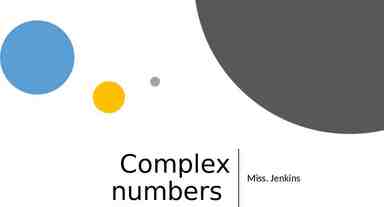IOT(18EC64) -MODULE-2 Nischitha S Assistant Professor Department of
60 Slides3.68 MB

IOT(18EC64) -MODULE-2 Nischitha S Assistant Professor Department of ECE BGSIT

MICROSOFT TEAMS-- TEAMS-- INTERNET OF THINGS-- FILES-- CLASS MATERIALS-- IOT(18EC64) MODULE-1

SMART OBJECTS Smart objects are any physical objects that contain embedded technology to sense and/or interact with their environment in a meaningful way by being interconnected and enabling communication among themselves or an external agent FUNDAMENTAL BUILDING BLOCKS IF IOT NETWORK -- Sensors --Actuators --Smart Objects

SENSOR Physical quantity-- digital representation Digital representation-- transformation into useful data Sensors can be readily embedded in any physical objects that are easily connected to the Internet by wired or wireless networks, they can interpret their environment and make intelligent decisions

Sensors Active or passive Invasive or non-invasive Absolute or relative Area of application How sensors measure What sensors measure

The physical phenomen on a sensor is measuring

Sensors in smart phone

Actuators Complements to sensor

Actuators Classification Type of motion Power Binary or continuous Area of application Type of energy

Actuator Classification by Energy Type

MEMS Micro-electro-mechanical system

Smart object defining characteristics Processing Unit Sensor(s) and /or actuator(s) Communication Device Power Source:

Trends in Smart Objects Size is decreasing: Power consumption is decreasing Processing power is increasing Communication capabilities are improving Communication is being increasingly standardized

Sensor Networks Sensor/Actuator Network-SANET,,, Example: Smart home ADVANTAGES Greater deployment flexibility (especially in extreme environments or hard-to-reach places) Simpler scaling to a large number of nodes Lower implementation costs Easier long-term maintenance introduction of new sensor/actuator nodes dynamic/rapid topology changes Effortless Better equipped to handle

DISADVANTAGES Potentially less secure (for example, hijacked access points) Typically, lower transmission speeds Greater level of impact/influence by environment

WIRELESS SENSOR NETWORKS(WSN) Limited processing power Limited memory Lossy communication Limited transmission speeds Limited power Data aggregation Communication Protocols for Wireless Sensor network

Connecting Smart Objects

Frequency Bands International Telecommunication Union (ITU) and the Federal Communications Commission (FCC) licensed and unlicensed bands For IoT access, these are the most well-known ISM bands: 2.4 GHz band as used by IEEE 802.11b/g/n Wi-Fi IEEE 802.15.1 Bluetooth IEEE 802.15.4 WPAN

IEEE 802.15.4, 802.15.4g, and 802.11ah, and LPWA technologies use Sub-GHZ The most well-known ranges are centered on 169 MHz, 433 MHz, 868 MHz, and 915 MHz. The 868 MHz band is applicable to IoT access technologies such as IEEE 802.15.4 and 802.15.4g, 802.11ah, and LoRaWAN

Power Consumption Battery-powered-- more flexibility IOT wireless access technology-- low power consumption and connectivity for battery powered devices Low-Power Wide-Area

Toplogy

Constrained nodes

IOT Access Technologies IEEE 802.15.4 o Home and building automation Automotive networks Industrial wireless sensor networks Interactive toys and remote controls Interference and multipath fading occur with IEEE 802.15.4 because it lacks a frequency-hopping technique

Protocols based on IEEE802.15. 4

ZIGBEE

ZIGBEE IP

802.15.4 PHYSICAL AND MAC LAYER The original IEEE 802.15.4-2003 standard specified only three PHY options based on direct sequence spread spectrum (DSSS) modulation The original physical layer transmission options were as follows: 2.4 GHz, 16 channels, with a data rate of 250 kbps 915 MHz, 10 channels, with a data rate of 40 kbps 868 MHz, 1 channel, with a data rate of 20 kbps

IEEE 802.15.4-2006, 802.15.4-2011, and IEEE 802.15.4-2015 introduced additional PHY communication options OQPSK PHY BPSK PHY ASK PHY

IEEE 802.15.4 PHY FORMAT

802.15.4 MAC layer functions Network beaconing for devices acting as coordinators (New devices use beacons to join an 802.15.4 network) PAN association and disassociation by a device Device security o Reliable link communications between two peer MAC entities The MAC layer achieves these tasks by using various predefined frame types. In fact, four types of MAC frames are specified in 802.15.4:

Data frame: Handles all transfers of data Beacon frame: Used in the transmission of beacons from a PAN coordinator Acknowledgement frame: Confirms the successful reception of a frame MAC command frame: Responsible for control communication between devices

IEEE 802.15.4 MAC FORMAT

TOPOLOGY

SECURITY

IEEE 802.15.4g and 802.15.4e o Distribution automation and industrial supervisory control and data acquisition (SCADA) environments for remote monitoring and control Public lighting Environmental wireless sensors in smart cities Electrical vehicle charging stations Smart parking meters Microgrids Renewable energy. Standardization and Alliances:

Physical layer --Multi-Rate and Multi-Regional Frequency Shift Keying (MR-FSK): --Multi-Rate and Multi-Regional Orthogonal Frequency Division Multiplexing(MR-OFDM) --Multi-Rate and Multi-Regional Offset Quadrature Phase-Shift Keying (MR-O-QPSK)

MAC layer --Time slotted channel hopping(TSCH) --Information elements --Enhanced beacons --Enhanced beacon requests --Enhanced acknowledgement

TOPOLOGY Security

IEEE 1901.2a Wired technology Narrowband Power Line Communication -Smart metering -Distribution automation -public lighting - Electric vehicle -Microgrids -Renewable energy

Standardization and Alliance -NB-PHY and MAC -802.15.4e information fields elements usage -Home plug alliance

NB-PLC Frequency Bands Physical layer

MAC Layer

Topology - Mesh Security

IEEE 802.11ah Wireless Sub-GHz version of Wi-Fi Standardization and Alliance Physical layer ---868–868.6 MHz for EMEAR, 902–928 MHz and associated subsets for North America and AsiaPacific regions, and 314–316 MHz, 430–434 MHz, 470–510 MHz, and 779–787 MHz for China. -- OFDM modulation, IEEE 802.11ah uses channels of 2, 4, 8, or 16 MHz

MAC layer Number of devices MAC header Null data packet (NDP) support Grouping and sectorization Restricted access window (RAW) Target wake time (TWT) Speed frame exchange

TOPOLOGY

Security - Similar to IEEE 802.11 specification Competitive technologies - IEEE 802.15.4 and IEEE 802.15.4e

LoRa WAN

PHYSICAL LAYER use of the main unlicensed sub-GHz frequency bands of 433 MHz, 779–787 MHz, 863–870 MHz, and 902–928 MHz, as well as regional profiles for a subset of the 902–928 MHz bandwidth. For example, Australia utilizes 915–928 MHz frequency bands, while South Korea uses 920–923 MHz and Japan uses 920–928 MHz. A LoRa gateway is deployed as the center hub of a star network architecture. An important feature of LoRa is its ability to handle various data rates via the spreading factor.

MAC LAYER Three classes of LORA WAN devices - Class A -Class B Class C

High level LoRa WAN MAC frame format

In version 1.0.x, LoRa WAN utilizes six MAC message types Join request Join accept messages Unconfirmed data up/down message Confirmed data up/down message Uplink messages Downlink messages

TOPOLOGY

SECURITY

LoRaWAN endpoints attached to a LoRaWAN network must get registered and authenticated --Activation by personalization (ABP) --Over-the-air activation (OTAA)

NB-IoT and other LTE variations LTE Cat0 LTE-M - Lower receive bandwidth - Lower data rate - Half duplex mode - Enhanced discountinous reception(eDRX)

NB-IoT Extended Coverage GSM (EC-GSM), Ericsson proposal Narrowband GSM (N-GSM), Nokia proposal Narrowband M2M (NB-M2M), Huawei/Neul proposal Narrowband OFDMA (orthogonal frequency-division multiple access), Qualcomm proposal Narrowband Cellular IoT (NB-CIoT), combined proposal of NB-M2M and NB-OFDMA Narrowband LTE (NB-LTE), Alcatel-Lucent, Ericsson, and Nokia proposal Cooperative Ultra Narrowband (C-UNB), Sigfox proposal

Standalone: In-band In-band








